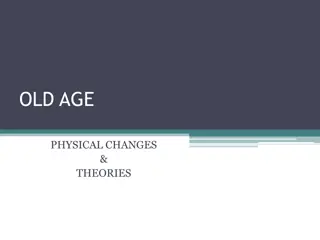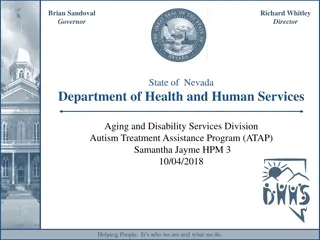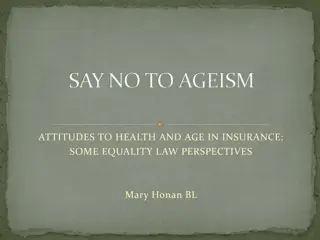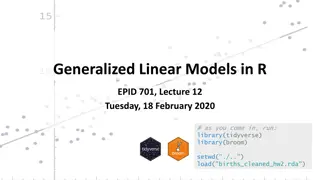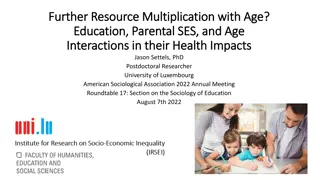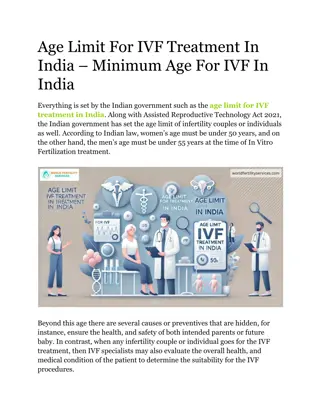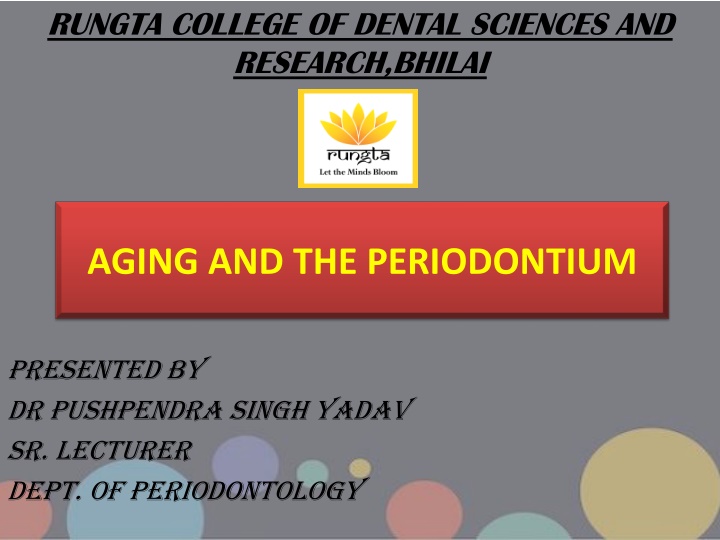
Impact of Aging on the Periodontium
Explore the effects of aging on the gingival epithelium, connective tissue, periodontal ligament, cementum, and alveolar bone. Learn about the changes in the periodontium with age and how they influence the progression of periodontal diseases and response to treatment.
Download Presentation

Please find below an Image/Link to download the presentation.
The content on the website is provided AS IS for your information and personal use only. It may not be sold, licensed, or shared on other websites without obtaining consent from the author. If you encounter any issues during the download, it is possible that the publisher has removed the file from their server.
You are allowed to download the files provided on this website for personal or commercial use, subject to the condition that they are used lawfully. All files are the property of their respective owners.
The content on the website is provided AS IS for your information and personal use only. It may not be sold, licensed, or shared on other websites without obtaining consent from the author.
E N D
Presentation Transcript
RUNGTA COLLEGE OF DENTAL SCIENCES AND RESEARCH,BHILAI AGING AND THE PERIODONTIUM Presented by Dr pushpendra singh yadav Sr. lecturer Dept. of periodontology
SPECIFIC LEARNING OBJECTIVES CORE AREAS DOMIN CATEGORY Introduction Desire to know Affective Gingival eithelium Cognitive Must be know Gingival Connective Tissue Cognitive Must be know Periodontal Ligament Cognitive Must be know Cementum Cognitive Must be know Alveolar Bone Cognitive Must be know
contents Introduction Gingival epithelium Gingival Connective Tissue Periodontal Ligament Cementum Alveolar Bone Effects of Aging on the Progression of Periodontal Diseases Effects of Aging on the Response to Treatment of the Periodontium Summary References
Introduction Introduction Increased life expectancy and greater health expectations may lead to changes in demand from older individuals for periodontal treatment. Therefore, an understanding of the impact of aging on the periodontium is critical.
GINGIVAL EPITHELIUM Thinning and decreased keratinization of the gingival epithelium ..........The significance of these findings could mean an increase in epithelial permeability to bacterial antigens, a decreased resistance to functional trauma, or both. flattening of rete pegs and altered cell density.
Migration of the junctional epithelium to a more apical position on the root surface. In other animal studies, however, no apical migration has been noted. With continuing gingival recession, the width of the attached gingiva would be expected to decrease with age, but the opposite appears to be true.
Alternatively, the migration of the junctional epithelium to the root surface could be caused by the tooth erupting through the gingiva in an attempt to maintain occlusal contact with its opposing tooth (passive eruption) as a result of tooth surface loss from attrition.
Diagram showing the relationship of the gingival margin with the crown and root surface. Normal relationship with the gingival margin 1 to 2 mm above the cementoenamel junction (A). Wear of the incisal edge and continued tooth eruption (B). The gingival margin remains in the same position as in A; therefore the root surface is exposed, and clinical recession is evident. The width of the attached gingiva has not changed. Wear of the incisal edge and continued tooth eruption (C). The gingival margin has moved with the tooth; therefore the entire dentogingival complex has moved coronally, with a resulting increase in the width of the attached gingiva. No wear of incisal edge is evident (D). Gingiva has moved apically, and clinical recession is evident. The width of attached gingiva is reduced
Gingival Connective Tissue Increasing age results in coarser and denser gingival connective tissues. Collagen ..........an increased rate of conversion of soluble to insoluble collagen, increased mechanical strength, and increased denaturing temperature. Increased collagen stabilization
A greater collagen content has been found in the gingiva of older animals despite a lower rate of collagen synthesis with age.
PERIODONTAL LIGAMENT decreased numbers of fibroblasts and a more irregular structure, paralleling the changes in the gingival connective tissues decreased organic matrix production and epithelial cell rests and increased amounts of elastic fiber.
width of the space will decrease if the tooth is unopposed (hypofunction) or will increase with excessive occlusal loading. Both scenarios might be anticipated as a result of tooth loss in this population
CEMENTUM An increase in cemental width is a common finding; this increase may be 5 to 10 times with increasing .........because deposition continues after tooth eruption. The increase in width is greater apically and lingually. Although cementum has limited capacity for remodeling, an accumulation of resorption bays explains the finding of increasing surface irregularity.
ALVEOLAR BONE more irregular periodontal surface of bone and less regular insertion of collagen fibers. Although age is a risk factor for the reduction of bone mass in osteoporosis, it is not causative and therefore should be distinguished from physiologic aging processes
Experimental animals show: (Van der velden, 1984) Decreased width of cribriform plate with age Decrease width of interdental alveolar septum - result of interproximal wear of the teeth. Transformation from immature trabeculated bone to a dense lammellated bone.
Proliferative activity of the cells in the osteogenic layer at the surface of the cribriform plate is low compare to cells in epithelium and connective tissue. Decreased trabeculation is often seen which may be related to diminished because of tooth loss or to the presence of osteoporotic changes functional stimulation
healing rate of bone in extraction sockets appears to be unaffected by increasing age. Indeed, the success of osseointegrated dental implants, which rely on intact bone-healing responses, does not appear to be age related
BACTERIAL PLAQUE Dentogingival plaque accumulation has been suggested to increase with age. In gingival recession, the surface characteristics of the exposed root surface act as a substrate for plaque formation compared with enamel. Other studies have shown no difference in plaque quantity with age
For supragingival plaque....no differences have been shown for plaque composition. For sub-gingival plaque, ....one study reported increased numbers of enteric rods and pseudo-monads in older adults. increased role for Porphyromonas gingivalis and a decreased role for Actinobacillus actinomycetemcomitans
IMMUNE RESPONSE A decline in immune responses occurs with aging. Changes in older subjects are complex, encompassing an increase in serum immunoglobulin levels, Increase in serum natural killer cells, and an increase in interleukin (IL)-l, IL-6, and tumor necrosis factor. In fact, the combination of an increase in serum IgG titers and a decline in the efficacy of cellular immunity may result in an increased risk for periodontitis with increasing age.
EFFECTS OF AGING ON PROGRESSION OF PERIODONTAL DISEASE In a classic experimental gingivitis study by Loe H (1965), subjects were rendered plaque and inflammation free through frequent professional cleaning. Once this was achieved, the subjects abstained from oral hygiene measures for periods of 3 weeks to allow gingivitis to develop.
In this experimental model, a comparison of developing gingivitis between young and older individuals demonstrated a greater inflammatory response in older subjects, both in humans and dogs
In the older age group (65-80 years), the findings included a greater size of infiltrated connective tissue, increased gingival crevicular fluid flow, and increased gingival index. Age has been suggested as being not a true risk factor but a background or an associated factor for periodontitis.
AGING AND RESPONSE TO TREATMENT OF THE PERIODONTIUM few studies clearly demonstrate that despite the histologic changes in the periodontium with aging, no differences in response to nonsurgical or surgical treatment have been shown for periodontitis. If plaque control is not ideal, however, continued loss of attachment is inevitable
Summary Summary The biologic effects of aging have either no impact or a minimal impact on an individual s response to periodontal treatment.However, other factors may have a profound impact, including cognitive and motor skills as well as medical history. An increase in cemental width is a common finding with increase in age. This increase may be 5 10 times increasing with age.
Reference Newman MG, Takei HH, Klokkevold PR, Carranza FA. Carranza s clinical periodontology, 10th ed. Saunders Elsevier; 2007. Lindhe J, Lang NP and Karring T. Clinical Periodontology and Implant Dentistry. 6th ed. Oxford (UK): Blackwell Publishing Ltd.; 2015. Newman MG, Takei HH, Klokkevold PR, Carranza FA. Carranza s clinical periodontology, 13th ed. Saunders Elsevier; 2018.
THANK YOU THANK YOU



